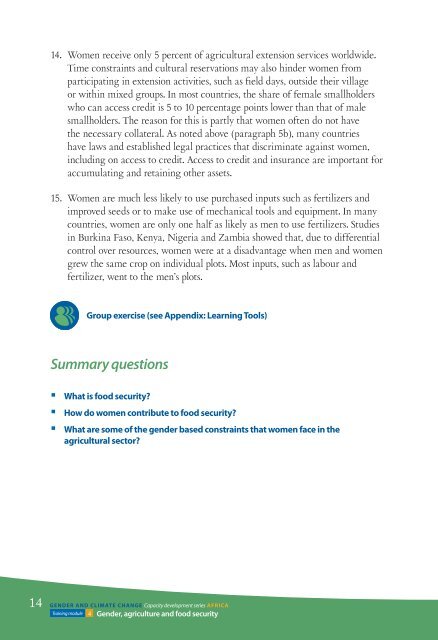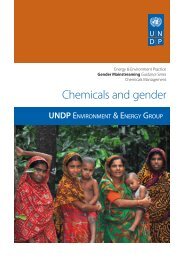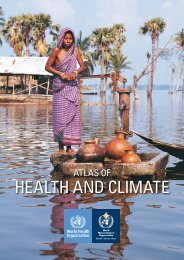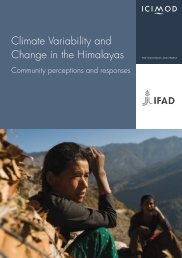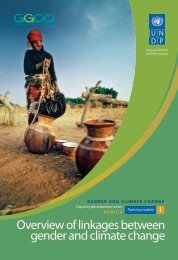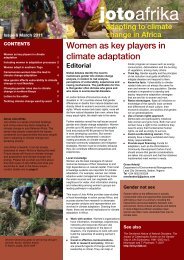Module 4: Gender, Agriculture and Food Security - Gender Climate
Module 4: Gender, Agriculture and Food Security - Gender Climate
Module 4: Gender, Agriculture and Food Security - Gender Climate
- No tags were found...
Create successful ePaper yourself
Turn your PDF publications into a flip-book with our unique Google optimized e-Paper software.
14. Women receive only 5 percent of agricultural extension services worldwide.<br />
Time constraints <strong>and</strong> cultural reservations may also hinder women from<br />
participating in extension activities, such as field days, outside their village<br />
or within mixed groups. In most countries, the share of female smallholders<br />
who can access credit is 5 to 10 percentage points lower than that of male<br />
smallholders. The reason for this is partly that women often do not have<br />
the necessary collateral. As noted above (paragraph 5b), many countries<br />
have laws <strong>and</strong> established legal practices that discriminate against women,<br />
including on access to credit. Access to credit <strong>and</strong> insurance are important for<br />
accumulating <strong>and</strong> retaining other assets.<br />
15. Women are much less likely to use purchased inputs such as fertilizers <strong>and</strong><br />
improved seeds or to make use of mechanical tools <strong>and</strong> equipment. In many<br />
countries, women are only one half as likely as men to use fertilizers. Studies<br />
in Burkina Faso, Kenya, Nigeria <strong>and</strong> Zambia showed that, due to differential<br />
control over resources, women were at a disadvantage when men <strong>and</strong> women<br />
grew the same crop on individual plots. Most inputs, such as labour <strong>and</strong><br />
fertilizer, went to the men’s plots.<br />
Group exercise (see Appendix: Learning Tools)<br />
Summary questions<br />
• What is food security<br />
<br />
<br />
• How do women contribute to food security<br />
• What are some of the gender based constraints that women face in the<br />
agricultural sector<br />
14<br />
<strong>Gender</strong> <strong>and</strong> <strong>Climate</strong> Change Capacity development series Afric a<br />
Training module 4 <strong>Gender</strong>, agriculture <strong>and</strong> food security


